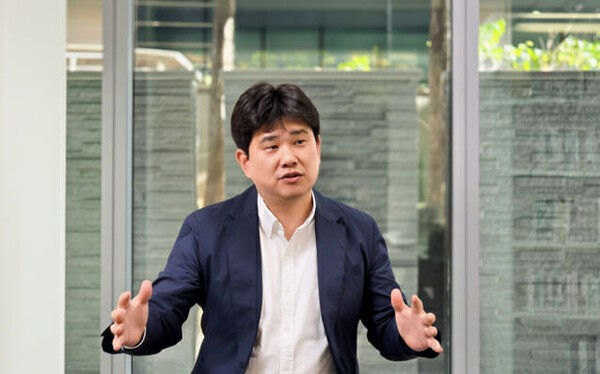AI That Works Right Where You Are
For years, using artificial intelligence on a phone or home appliance meant one familiar routine: connect to a cloud server, send data for analysis, then wait for the results to return. Samsung is now rewriting that script. The company is accelerating development of on-device AI, a technology that allows artificial intelligence to run directly on your personal device instead of relying on distant servers.
Samsung Research says its mission is clear. It wants to “upgrade AI experiences people can feel in their hands.” To do that, the company is pushing forward with its own algorithms, execution engines and hardware architecture.

Shrinking the Model Without Shrinking the Intelligence
As AI models balloon into tens of billions of parameters, running them on mobile devices creates problems. Heavy computation drains battery life, raises heat and slows response times. According to Myungjoo Ham, Master at Samsung Research’s AI Center, model compression is the first step toward true on-device intelligence.
Switching from 32-bit floating-point calculations to 8-bit or even 4-bit integers dramatically reduces memory use and computation. That makes the model faster and far more energy-efficient. But the key is not simply making a model smaller. It is keeping it accurate after compression.
Samsung Research analyzes errors introduced during compression and preserves high-priority weights while aggressively compacting less important ones. The goal is to maintain both speed and precision, a balance that has long challenged the AI industry.
The Hidden Engine Behind the Scenes
Even a smaller model does not guarantee a smooth on-device experience. A model must divide its workload across components like the CPU, GPU and NPU. Samsung is developing what it calls an AI execution engine, a controller that automatically allocates tasks to the right processing units while minimizing memory access.
With this approach, even larger and more sophisticated models can run on the same hardware without slowing down.
At the same time, the company is pursuing new AI architectures built specifically for devices with limited resources. Traditional Transformer models excel at understanding context, but their computation cost grows rapidly as input length increases. Samsung’s researchers are exploring alternative designs that can deliver strong performance without overwhelming mobile hardware.
Why It Matters and Why Samsung Is Positioned to Lead
On-device AI is more than a trend. It represents a shift in how consumers and companies will interact with technology.
• Speed and independence: With AI running locally, responses arrive instantly and continue working even without a network connection.
• Privacy protection: User data stays on the device, reducing exposure to cloud servers.
• A powerful ecosystem advantage: Samsung controls smartphones, tablets, TVs, home appliances and semiconductor technologies. This vertical integration gives the company a unique edge in deploying AI across a massive device portfolio.
The Remaining Challenge
Building AI models that are small, fast and accurate is one of the toughest problems in the field. Memory bandwidth, storage speed and limited compute resources still create bottlenecks. Even so, Samsung Research says it has reached a point where a 30-billion-parameter generative model that normally requires more than 16 gigabytes can now run in under 3 gigabytes of memory.
This achievement signals a new era. AI is no longer locked in distant data centers. It is becoming a living capability inside the devices we carry every day. With its focus on efficiency, responsiveness and privacy, Samsung is betting that the future of intelligence is not in the cloud but right in your palm.
A day when you use powerful AI instantly and anywhere, regardless of network conditions, may be closer than anyone expected.
Written by Tech Insider Columnistㅣtlswnqor@naver.com
- Transparent iPhone Rumors Surge Again as Apple’s “All-Glass” Patent Raises Bezel-Free iPhone Expectations
- Samsung Faces Record AP Procurement Costs as Exynos Becomes Its Best Lifeline
- Samsung Opens the 2026 Foldable Battle… “Ultra-Slim, Ultra-Light Flip Will Rewrite the Market”
- Samsung’s “Tri-Fold” Phone Arrives Dec. 5... A Bold Bid to Rewrite the Foldable Playbook
- Samsung Galaxy S26 Ultra: Why the Punch Hole Got Bigger...A Deep Dive into Samsung’s New Strategy

![[동학] 카카오톡 친구탭, 결국 12월 롤백… “격자형 피드는 선택 옵션으로”](https://cdn.kmjournal.net/news/thumbnail/custom/20251126/5517_10550_1119_1763853080_120.jpg)


![[테크 칼럼] 제미나이3, GPT-5.1을 넘다…AI는 이제 ‘일을 대신하는 시대’로 간다](https://cdn.kmjournal.net/news/thumbnail/custom/20251126/5457_10454_4847_1763621329_120.jpg)



![[낭만 테크 시대] AI 대항해 시대](https://cdn.kmjournal.net/news/thumbnail/custom/20251126/5603_10714_4334_1764121414_160.jpg)

